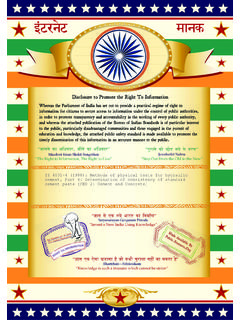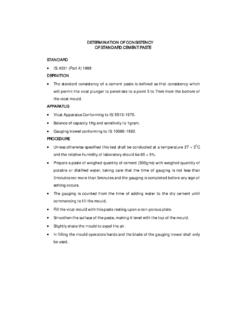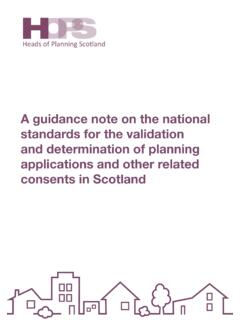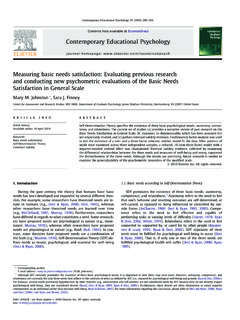Transcription of DEPARTMENT OF THE TREASURY INTERNAL REVENUE …
1 OFFICE OFCHIEF COUNSELDEPARTMENT OF THE TREASURYINTERNAL REVENUE SERVICEWASHINGTON, 20224 August 9, 2000 UILs: , , , : 200038045CC:TEGE:EOEG:ET1 Release Date: 9/22/2000 WTA-N-110700-00 MEMORANDUM FOR Director, Office of Employment Tax Administration and ComplianceAttn: Charles M. HarvelFROM:Acting Chief, Employment Tax Branch 1, Office of DivisionCounsel/Associate Chief Counsel (Tax Exempt and GovernmentEntities)SUBJECT: Corporate Officer Compensation and Classification IssuesAs a follow-up to the advice we issued in January 2000 (IRS CCA 200009043;2000 IRS CCA Lexis 1), you have asked for additional technical advice involvingseveral areas related to corporate officer compensation and classification.
2 We welcome the opportunity to provide additional writtenguidance and clarification in these areas. For clarity, these issues have beenseparately numbered and discussed PRESENTED1. Are corporate officers entitled to treatment under section 530 of the REVENUE Act of1978 and, if so, is submission of a Form 1099 sufficient to establish the corporation streatment of that worker as an independent contractor?2. When is it appropriate to issue a Notice of Determination Concerning WorkerClassification (notice of determination) under 7436 when the worker involved isa corporate officer?
3 3. Is the Classification Settlement Program (CSP) available when compensation to acorporate officer is mischaracterized, rather than when the officer s worker classificationis incorrect?4. Are the 3509 rates appropriate for application in the context of corporateofficer misclassification?BRIEF ANSWERS1. Corporate officers are entitled to treatment under section 530. Further, submissionof a Form 1099 may be sufficient to establish a corporation s treatment of the officer asan independent contractor. 2 WTA-N-110700-002. Where an audit of a corporation has resulted in an actual controversy as to theclassification of a corporate officer as an employee for employment tax purposes, orwhere the Service has determined that the corporation is not entitled to section 530relief, a notice of determination must be issued.
4 3. Where a corporate officer s compensation has been mischaracterized, as opposedto a corporate officer s status being misclassified, CSP relief is not available. 4. Section 3509 rates are appropriate for application where the status of a corporateofficer has been Section 530 relief for corporate officers and submission of a Form 1099 as sufficienttreatment for independent contractor statusUnder section 530(a)(1) of the REVENUE Act of 1978, termination of certainemployment tax liability is appropriate where: 1) the taxpayer did not treat the individualas an employee for any period; 2) all required Federal tax returns reflect the taxpayer sconsistent treatment of the individual as a non-employee.
5 And 3) the taxpayer had areasonable basis for not treating the individual as an employee. Additionally, section 530(a)(3) requires that the taxpayer not have treated any individual in a substantiallysimilar position as an employee for any period. However, section 530(d) containsspecific exceptions from employment tax liability relief under section 530(a). Specifically, in the context of a three-party service arrangement where a businessprovides workers to a client, section 530 relief is unavailable if a worker providesservices as an engineer, designer, drafter, computer programmer, systems analyst, orother similarly skilled worker engaged in a similar line of work.
6 REVENUE Act of 1978 530(d). The language of section 530 contains no specific exclusion which would preventa taxpayer from obtaining section 530 relief if the Service determined that its corporateofficers were employees. Indeed, when Congress was considering exceptions tosection 530 relief, its intent was to except workers, under the common law rules,retained by businesses which provide technical services . See Independent Contractoror Employee?: Training Materials [Training 3320-102 (Rev. 10-96) TPDS 84238I] at 1-38. Accordingly, section 1706 of the Tax Reform Act of 1986 (1986-3 (Vol.))
7 1)698), amended section 530 by adding the specific exclusions under section 530(d). Corporate officers are not included in this exclusion. Furthermore, section ofRevenue Procedure 85-18 specifically states that [f]or purposes of section 530(a) ofthe Act, the term employee means employees under sections 3121(d), 3306(i), and3401(c) of the Code. Rev. Proc. 85-18, 1985-1 518. Corporate officers aredefined as employees under 3121(d)(1), 3306(i), and 3401(c). Although REVENUE Procedure 85-18 explains that, for section 530 relief, the termemployee means those individuals defined as employees under 3121(d),3306(i), and 3401(c), it has been suggested that the intent of Congress was to limit this 3 WTA-N-110700-00relief to common law employees.
8 Indeed, Rep. No. 95-1748, 95th Cong., 2nd (1978), 1978-3 (Vol. 1) at 632, notes that, in general, the bill was intended toprovide an interim solution involving controversies regarding whether certain individualswere employees under interpretations of the common law. However, the correspondingSenate Report (S. Rep. No. 95-1263, 95th Cong., 2nd Sess. at 209 (1978)) noted that [w]ith certain limited statutory exceptions, the classification of particular workers orclasses of workers as employees or independent contractors (self-employed persons),for purposes of Federal employment taxes, must be made under common law rules.
9 1978-3 (Vol. 1) at 507 (emphasis added). The report also noted that, [g]enerally,the basis for determining whether a particular worker is an employee or independentcontractor is the common law test of control. Id. (emphasis added). Further, the reportnoted, when explaining the reason for the change, that it was appropriate to provideinterim relief for taxpayers who are involved in employment tax status controversies withthe Service. Id. at 210; 508. The Senate's explanation did not indicate that section 530relief was limited to controversies surrounding determinations of employee status madeunder common law rules, but, rather, to taxpayers involved with employment statuscontroversies, common law or language of section 530(a) makes no statement that indicates that thistreatment is applicable to common law employees only.
10 Indeed, although section530(d) specifically lists the exceptions to section 530, no corporate officer exception isincluded. Additionally, section (1)a of the Employment Tax Handbookexplains that, for purposes of section 530 relief, the workers involved must be definedas employees under 3121(d). Also, section (1) explains thatcorporate officers are employees under 3121(d) for section 530 relief purposes. See also Employment Tax Handbook Further, REVENUE Procedure 85-18specifically indicates that corporate officers are employees for the purposes of section530 relief.
















